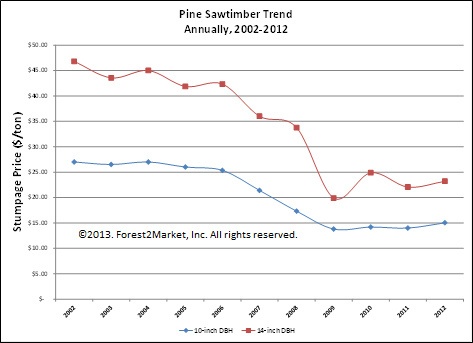
The North Carolina State Natural Resources Foundation (NCSNRF) appears to be in dire straits, scrambling for any means of income by selling the Hofmann Forest, an 80,000 acre research forest near Jacksonville, NC. The NC State forestry program acquired the land in the mid-1930s for the purposes of research and to generate income for the forestry program through timber harvesting and related activities. In January 2013, the NCSNRF 16-member Board voted unanimously to sell the land, and on February 21, 2013, the NC State Endowment Fund Board voted to endorse the sale.
David Ashcraft, executive director of NCSNRF and chief of fundraising and communications for NCSU’s College of Natural Resources, says, “The board is looking at the needs of the college going forward or what we could do with the Hofmann if we kept it, versus how the money, if it is sold, might be used for research in those same areas plus others.” (The College of Natural Resources is divided into three departments: Forestry and Environmental Resources, Parks, Recreation and Tourism Management, and Forest Biomaterials). Others, Barney Benard and Joe Roise for instance, contend the timing of the sale could not be worse as the NCSNRF will not be able to obtain a top sale price for the land.
The dominant timber product in the Hofmann forest is pine sawtimber. In 2002, stumpage prices for pine sawtimber averaged $27.01 per green ton in Onslow and Jones counties. Stumpage prices for pine sawtimber with an average 14-inch DBH was $46.81 per green ton, its highest in the last decade.
From 2002-2012, stumpage prices fell 44% (6% compounded annually) to average $15.04 per green ton in 2012. Pine sawtimber (14-inch) stumpage prices have depreciated 50% or (7% compounded annually) to $23.21 per green ton in 2012.
If NCSU were to sell the Hofmann forest today their setbacks would be two-fold.
- By selling now, NCSU will lose revenue. The value of pine sawtimber is forecast to increase as the housing market recovers from recession-era lows. Although it will take time to see improvements, NCSU holding onto the forest until prices become respectable will benefit them in the long run.
- A rushed sale of the Hofmann could potentially stop NCSU students, faculty, and alumni from accessing the forest. This will be detrimental to the success and growth of the College of Natural Resources department.
As Fred Cubbage, forestry faculty member at NCSU, said in the Raleigh News & Observer, “In addition to financial support, the Hofmann forest provides a unique location for researchers to conduct experiments on a variety of subjects, including natural resources management, forest economics, ground water supplies and wood quality.” As a young man who grew up in the Garden State, where forests are few and far between, access to the Hofmann forest played a vital role in my decision to attend NCSU and complete the thesis for my Master of Science in Forest Biomaterials.
While I hope I am wrong, it seems unfathomable to me that a bidder for the Hofmann forest will provide the NCSNRF with a respectable price in today’s market and provide unlimited access for existing and new research in the forest. In my opinion, the sale of the Hofmann forest will be a short-term gain but a long-term loss to the University, the College of Natural Resources and the citizens of North Carolina.
Comments
03-19-2013
If the Hofmann Forest is sold, this is my prediction of the future. It is correct that the stumpage prices dropped during the recession, which would lead most private land owners to harvest less timber and let volume continue to grow until prices return, resulting in being ahead of other investments when prices rebound, we have more volume at a higher price. However, poor financial management in the past committed the College of Natural Resources to spending at non-sustainable levels, even though faculty gave warnings about this mistake. It is not sustainable because to make up for the past errors we must over harvest today, in recognition that eventually we will run out. Now we are facing a deficit, created by past poor management. The option of selling the forest will result in a lot of cash, which will cure the deficit for a few years. Only a few years because, there are a lot of short sighted people who want to get some of that cash for their own pet projects, new buildings, more staff, more faculty, more equipment, and maybe even more scholarships for students. It appears that there will be loose controls on the endowment. One proposal has 4 million guaranteed the first 4 years, eating away at the principle. Another is to skim 20 to 40 million of the top to create a new building, eating away at the principle. Eventually, in not too many years the endowment income will not cover the over spending commitments of the past, eating away at the principle. If the past, which is all we know, is any predictor of the future the college will eventually not be able to cover its spending binge and the deficit problem will we worse than it is today and we will not have the land base to carry us through.
Comments
04-01-2013
This sounds like the faculty forgot the axioms of sustained yield forestry as well as succumbing to the same fallacies that many debt-loaded forestry firms fell for.
I would be willing to bet that not one of the faculty had real-life forestry business experience. They are killing the wood goose for current pleasure.




